
Customer: How do I move my piano from my house up north to my new condo down here in Florida?
Me: We can help you with that! We will coordinate with our network of professional piano movers and get back to you with the details.
Customer: Well, the furniture movers will already be at the house, can’t they just do it while they’re there? They said they do pianos all the time. They just need help getting the hinges off, and once the keys are pulled out, they want to know if it’s safe to bubble wrap them to the inside of the piano, or if it’s better to ship them separately.
Me: <sigh>
I get asked this question at least once a week. “Can the furniture movers move my piano while they’re there?” I’m sure you already know the answer, but rather than telling you, I’d like to show you some of what we’ve learned about piano moving from three generations in the business.
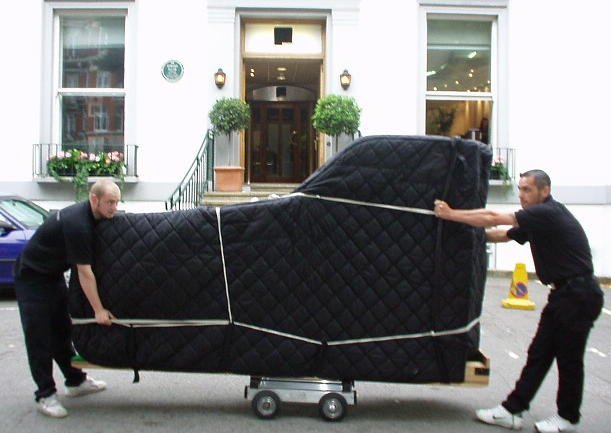
Expert Piano Moving:
Pianos are heavy.
Unbelievably heavy.
Larger models can weigh over a thousand pounds, and the weight is not evenly distributed, making them dangerous to move without the proper equipment and experience. With the right combination of tools, muscle, and know-how, professional piano movers tackle this Herculean task safely – for the piano, the home, and the movers.
Tools of the Trade:
Professional piano movers employ a number of very specific tools to help move pianos. These tools are expensive and specific to piano moving, which is why regular furniture movers will not have them. Even if a regular mover is strong and good at lifting couches, without the right tools they often take shortcuts that cause more damage in the end.
Red flags from unqualified movers:
A single experienced piano mover with the right tools and know-how can move a small grand piano alone, although a 2-man crew is typically employed for safety reasons. What follows are some of the red flags that can show you the mover doesn’t know what they’re doing.
They remove the lid. This is always bad news. The lid is fragile and unlike legs and some other parts, the lid was designed to never be removed. Overuse or over tightening will cause the hinge screws to strip the wood, just like a drill bit. We have repaired countless pianos with this problem, but it is a time consuming and expensive process. Never let the mover remove the lid!
They remove other hardware. This includes wheels, pins, screws, the music stand, the board that covers the keys, etc. If you see them unscrewing a bunch of stuff, tell them to stop! The only thing that needs to be removed are the three legs and the pedal lyre. Experienced piano movers will know exactly how and what to remove.
They use unconventional packing materials. I’ve seen movers use cellophane tape, cardboard, bubble wrap, you name it! I could not believe my eyes when I once saw these movers bubble-wrapping a Steinway piano and then taping around it like it was a package for the post office. Only specially designed moving blankets and pads should be used to protect the piano’s parts and finish.
They manipulate the piano in an unconventional way. The craziest thing I ever saw was a crew of 8 guys who actually lifted a piano up and set it down on the floor UPSIDE-DOWN before proceeding to bubble wrap it. The piano should never be upside down, on its keys, or on its curved side.
When the piano arrives
These are just a few of our recent damages caused by furniture movers. These movers tend to become very hard to contact after a move, and in very few of these cases was the customer compensated for the damages.


This is a pedal lyre from a Steinway Grand piano. The movers didn’t know how to remove it. When it wouldn’t come loose, they tried to pry it off. The lyre snapped and the small broken piece still held fast to the bottom of the piano.
There’s a trick to removing these depending on the size, age, and brand of the piano.
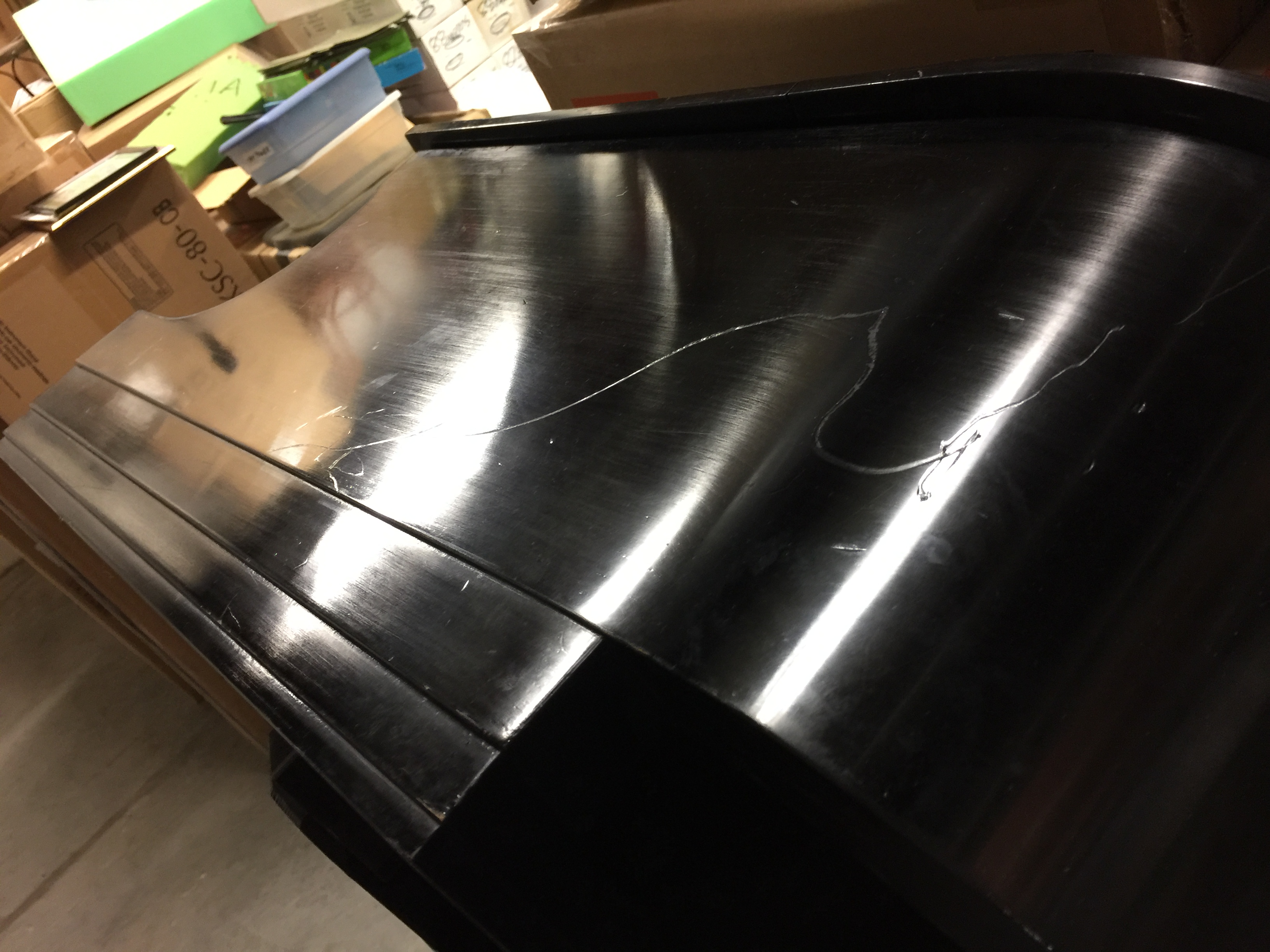
Our professional movers always inspect the piano before they wrap it in blankets and set up the piano once it reaches its destination. This Steinway grand was dropped off by a national furniture moving company who refused to set the piano up. Once our crew unwrapped and reassembled the piano, we noticed several ugly gouges like the one pictured, that cost several thousand dollars to repair.
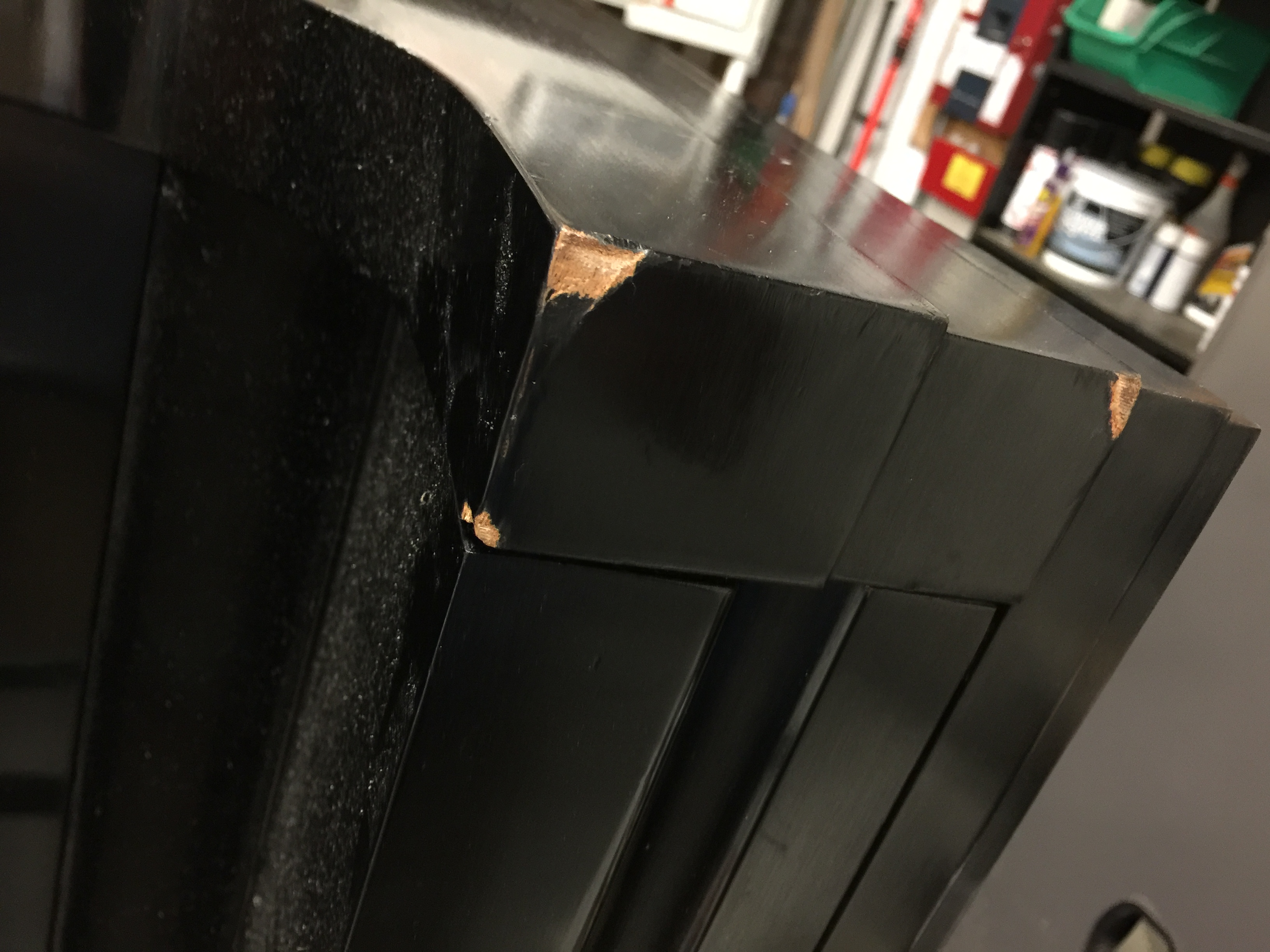
We always know when a piano was tipped on its keys or onto a hard surface. This piano was apparently rocked onto its keys on a hard surface, taking chunks of wood out of the corners.
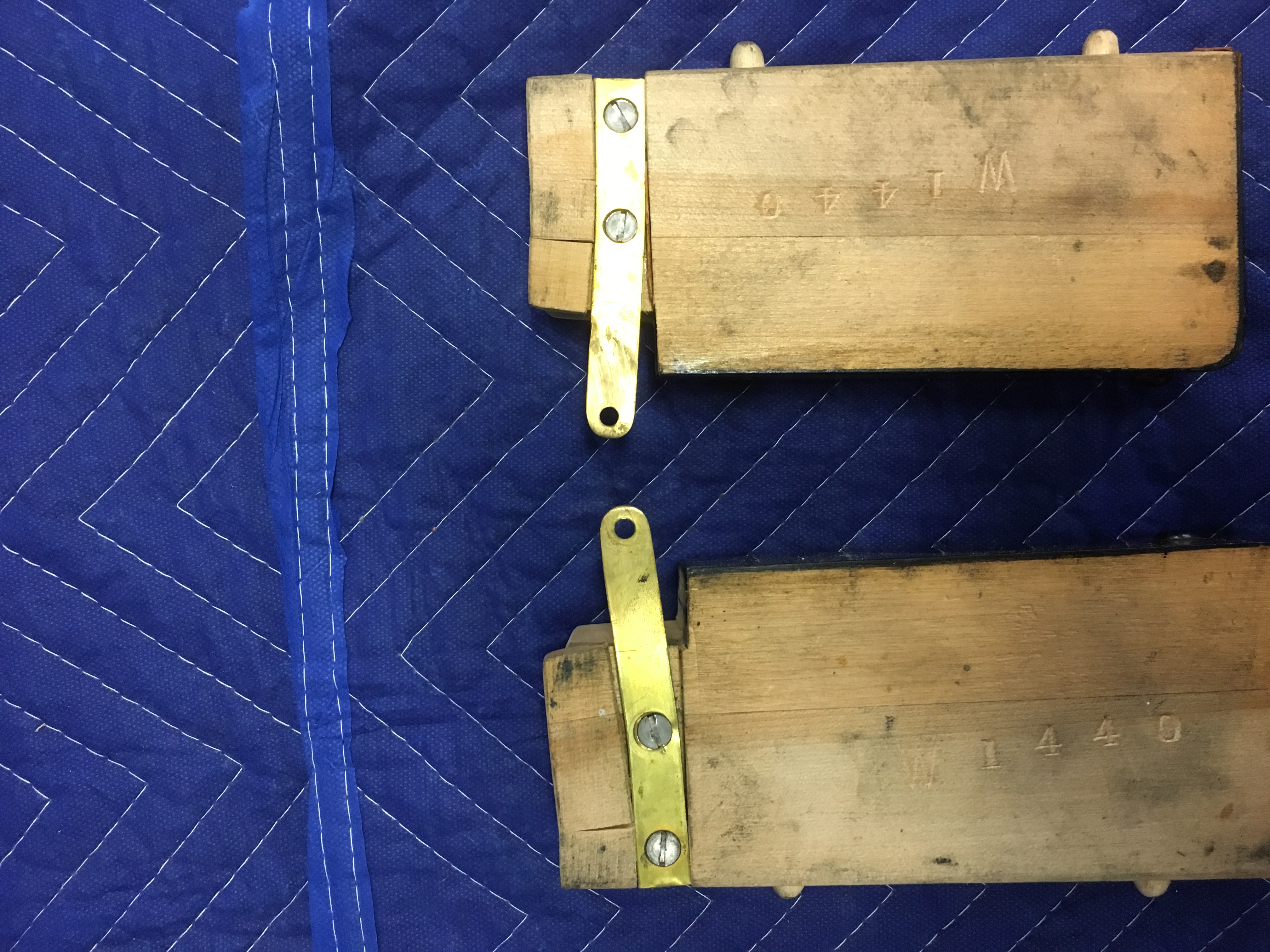
It’s a bit more difficult to see, but these metal flanges are bent to the left, and have broken the small wood piece that holds them in. Again, this is due to the piano being rocked onto its keys and putting pressure where pressure doesn’t belong.
What moves you:
If you need to move any piano across the street or across the country, we are here to help.
Complete our simple online form
and we’ll get you pricing information right away!
Spending a little more to move a piano properly can save you thousands of dollars later.
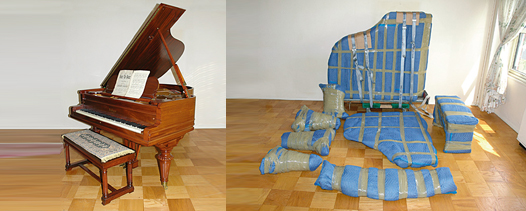
Please give me an estimate of what it would cost to move a Steinway parlor grand (6′) piano from Westminster, CO to Irvine, CA.